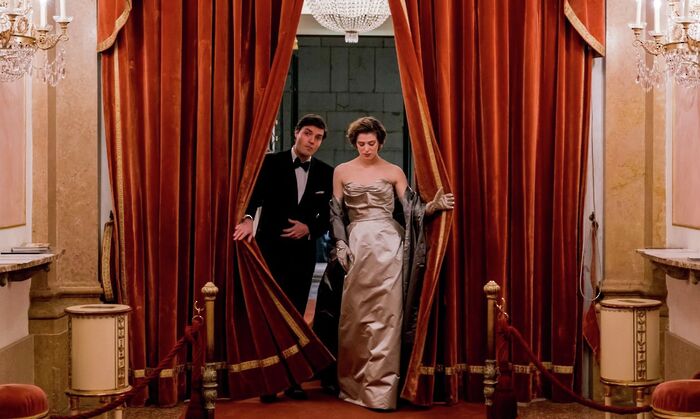I can’t look away from this Portrait of a Lady on Fire
Lorna Bo highly recommends this candid celebration of female love
Content Note: This article contains mentions of abortion and forced marriage.
“Don’t regret – remember.” Just these few words capture the essence of the beautiful yet doomed romance of Portrait of a Lady on Fire. Set in 1770, it chronicles the blossoming relationship between Héloïse, a countess’ daughter, and Marianne, who has been commissioned to paint her wedding portrait.
Every aspect of this film feels beautifully candid. It has the trappings of a period piece – the gowns, the candlelight, the wood panelled walls – but has a distinctly modern sensibility. The long, steady shots, tending to focus on Noémie Merlant (Marianne) and Adèle Haenel (Héloïse), allow them to shine. Their awkward playfulness bubbles through an initially restrained demeanour which eventually breaks down in the second half of the film.
It is, however, the consistent feminist undertone that marks the film as truly contemporary. The film features a main cast of four female characters (Marianne, Héloïse, Héloïse’s mother, and the maid Sophie) isolated on an island in Brittany, yet the hovering threat of the male world is always present.
All four main characters are shown to be victims of a patriarchy which is never explicitly shown. Héloïse is being married off, while Sophie is unwillingly pregnant and has to undergo a dubious and painful abortion. Even Héloïse’s mother, the one forcing Héloïse into marriage, is a victim; she had to go through the same thing years ago and yearns to go back home.
Héloïse and Marianne find solace in each other because of and despite the society they live in, sneaking their first kiss in a cave sheltered from the wind outside. They become intimate, and the island turns from a prison to a haven for female love.
“They choose not to live with each other, but rather with their memories of each other”
These feminist undertones intersect with the central theme of art. At first, it is something that confines – the wedding portrait is a literal objectification of Héloïse for her potential suitor to assess. But as the relationship blossoms, art instead becomes something that liberates, acting as a vehicle for the memory of their romance. Marianne draws a nude portrait of herself for Héloïse (hidden in a book), and draws a miniature of Héloïse for herself.
These covert memories will be the only remnants of their relationship, as they must ultimately separate to live in a society intolerant of their love. They choose not to live with each other, but with their memories of each other – in Marianne’s words, they “don’t make the lover’s choice, but the poet’s”. In a beautiful scene near the end of the film they tell each other: “don’t regret – remember”.
Portrait of a Lady on Fire could be one of the best films of next year. Its slow pace draws the viewer in the world of its protagonists, allowing pervasive symbolism and well-placed foreshadowing to pay off. There is almost no use of music (as I discovered while trying to quietly open a bag of popcorn), and the cinematography is simple.
The result is that the technicalities of the film effectively take a back seat to the incredible performances; there is complete immersion. The final shot is one of the most affecting I have ever watched, consisting only of the brilliant acting of Adèle Haenel, Vivaldi’s ‘Storm’, and a three-minute long camera zoom.
I left the cinema with the sense that I’d experienced a story that felt so true it must have happened, but one I had never been told until now.
 Comment / Cambridge students are too opinionated 21 April 2025
Comment / Cambridge students are too opinionated 21 April 2025 Interviews / Meet the Chaplain who’s working to make Cambridge a university of sanctuary for refugees20 April 2025
Interviews / Meet the Chaplain who’s working to make Cambridge a university of sanctuary for refugees20 April 2025 News / News in brief: campaigning and drinking20 April 2025
News / News in brief: campaigning and drinking20 April 2025 Comment / Cambridge’s tourism risks commodifying students18 April 2025
Comment / Cambridge’s tourism risks commodifying students18 April 2025 Comment / Does the AI revolution render coursework obsolete?23 April 2025
Comment / Does the AI revolution render coursework obsolete?23 April 2025





